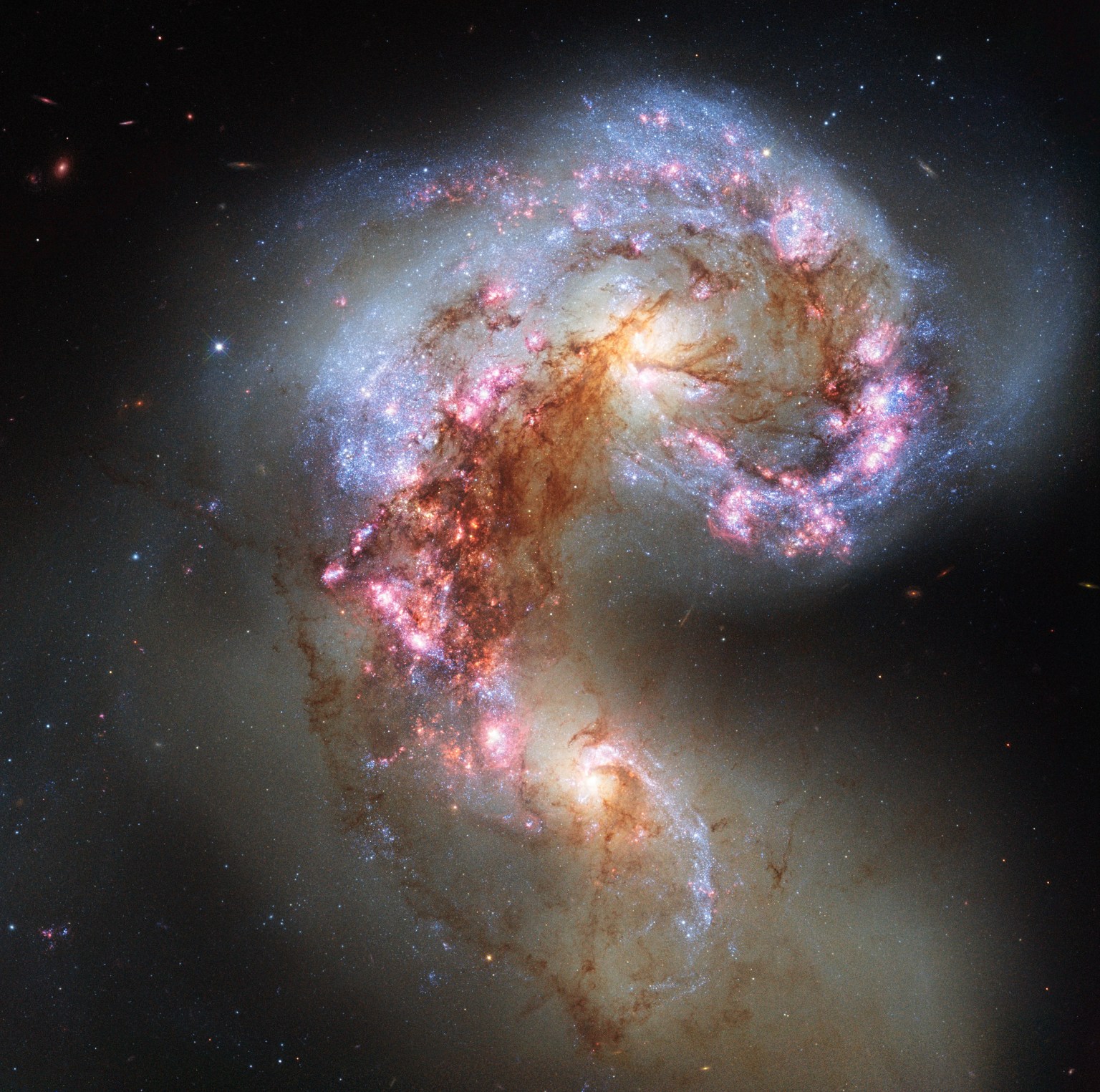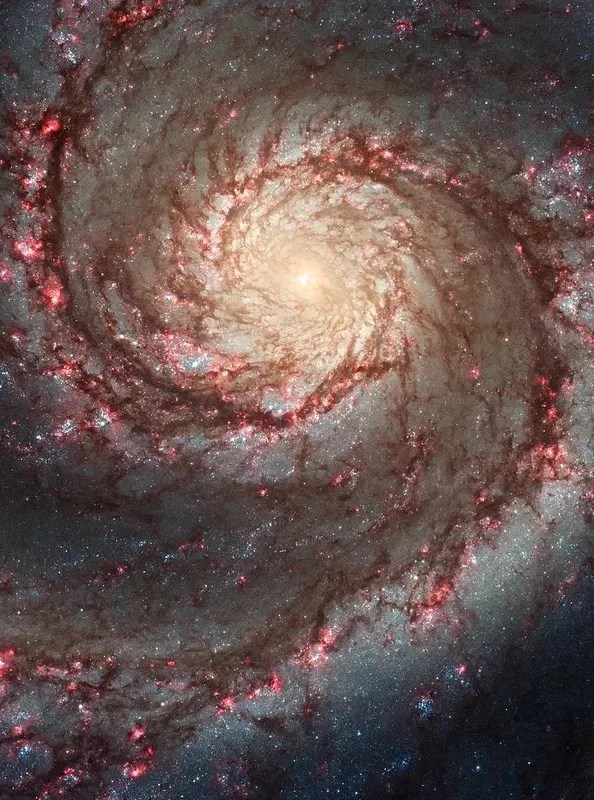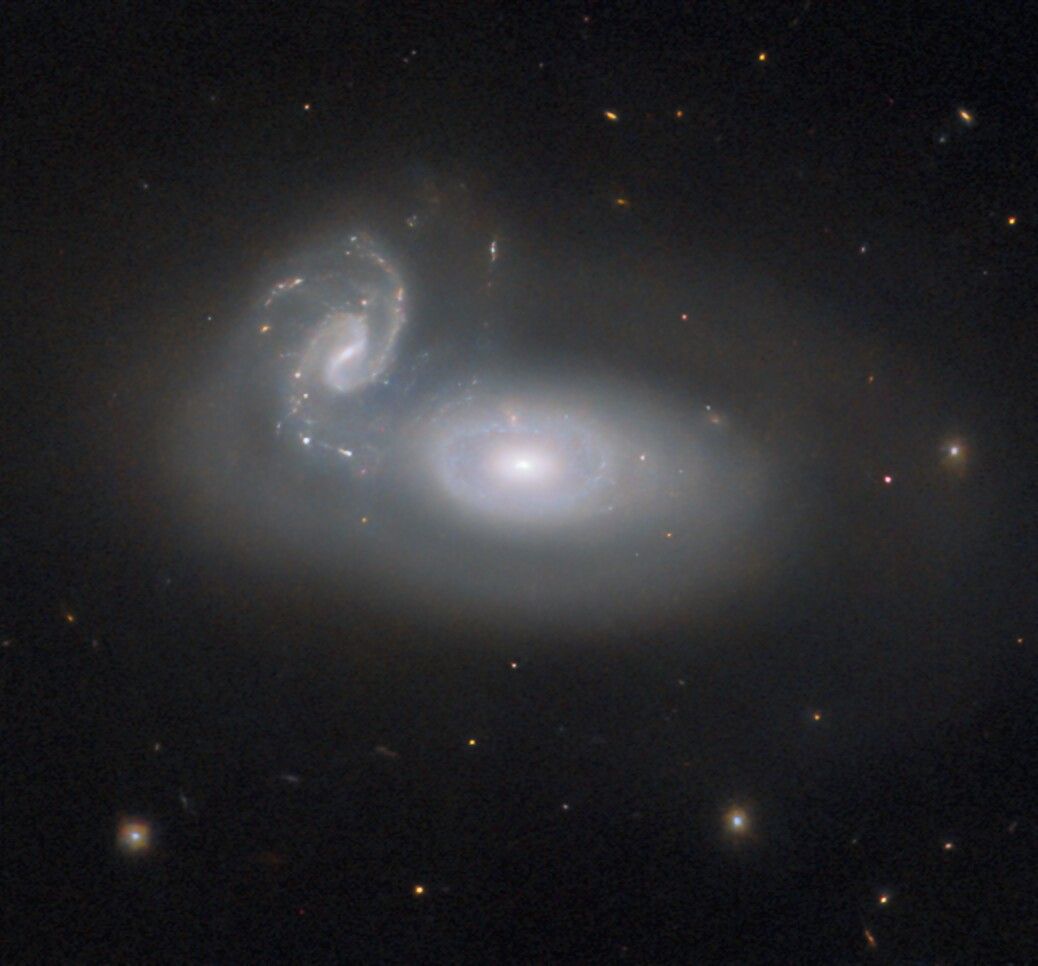Hubble Space Telescope Home Hubble Takes a Look at Tangled… Hubble Space Telescope Hubble Home Overview About Hubble The History of Hubble Hubble Timeline Why Have a Telescope in Space? Hubble by the Numbers At the Museum FAQs Impact & Benefits Hubble’s Impact & Benefits Science Impacts Cultural Impact Technology Benefits Impact on Human Spaceflight Astro Community Impacts Science Hubble Science Science Themes Science Highlights Science Behind Discoveries Hubble’s Partners in Science Universe Uncovered Explore the Night Sky Observatory Hubble Observatory Hubble Design Mission Operations Missions to Hubble Hubble vs Webb Team Hubble Team Career Aspirations Hubble Astronauts News Hubble News Hubble News Archive Social Media Media Resources Multimedia Multimedia Images Videos Sonifications Podcasts E-books Lithographs Fact Sheets Glossary Posters Hubble on the NASA App More Online Activities 2 min read
Hubble Takes a Look at Tangled Galaxies 
Download this image
This NASA/ESA Hubble Space Telescope image depicts the cosmic tangle that is MCG+05-31-045, a pair of interacting galaxies located 390 million light-years away and a part of the Coma galaxy cluster.
The Coma Cluster is a particularly rich cluster that contains over a thousand known galaxies. Amateur astronomers can easily spot several of these in a backyard telescope (See Caldwell 35). Most of them are elliptical galaxies, and that’s typical of a dense galaxy cluster like the Coma Cluster: many elliptical galaxies form through close encounters between galaxies that stir them up, or even collisions that rip them apart. While the stars in interacting galaxies can stay together, their gas is twisted and compressed by gravitational forces and rapidly used up to form new stars. When the hot, massive, blue stars die, there is little gas left to form new generations of young stars to replace them. As spiral galaxies interact, gravity disrupts the regular orbits that produce their striking spiral arms. Whether through mergers or simple near misses, the result is a galaxy almost devoid of gas, with aging stars orbiting in uncoordinated circles: an elliptical galaxy.
It’s very likely that a similar fate will befall MCG+05-31-045. As the smaller spiral galaxy is torn up and integrated into the larger galaxy, many new stars will form, and the hot, blue ones will quickly burn out, leaving cooler, redder stars behind in an elliptical galaxy, much like others in the Coma Cluster. But this process won’t be complete for many millions of years.
Explore more Coma Cluster images from Hubble. Hubble Uncovers Thousands of Globular Star Clusters Scattered Among Galaxies Hubble’s Galaxies With Knots, Bursts Hubble Sees Near and Far Hubble Sees Plunging Galaxy Losing Its Gas Hubble Catches Galaxies Swarmed by Star Clusters Facebook logo @NASAHubble @NASAHubble Instagram logo @NASAHubble Media Contact:
Claire Andreoli
NASA’s Goddard Space Flight Center, Greenbelt, MD
claire.andreoli@nasa.gov
Details Last Updated Nov 14, 2024 Editor Andrea Gianopoulos Location NASA Goddard Space Flight Center Related Terms Astrophysics Astrophysics Division Hubble Space Telescope Spiral Galaxies
Keep Exploring Discover More Topics From Hubble Hubble Space Telescope
Since its 1990 launch, the Hubble Space Telescope has changed our fundamental understanding of the universe.






